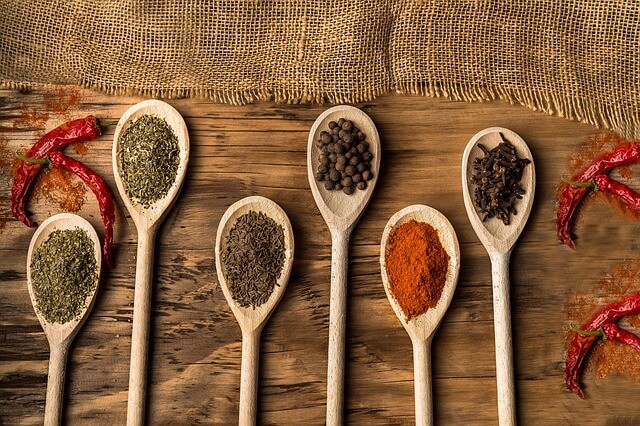Introduction
More than 1200 distinct flavouring agents are used in food to add flavour or restore Flavors that have been lost or altered during processing. Hundreds of flavouring agents in foods are utilized to mimic natural Flavors.
In our kitchen, we typically use natural flavorings. On the other hand, the food and beverage industries use both artificial and natural flavoring agents for large scale production.
Nowadays, more and more consumers are searching for food and drink items with clean labels that are created with natural, identifiable ingredients. In today’s world it is important to know about ingredients used in processed foods and flavouring agents are one of them.
Whether you are a food technologist, home cook, chef or simply someone who wants to know about flavouring agents this article will help you to understand the role of flavouring agents in food.

How is flavour made?
Food comes in a variety of forms, flavors, and textures, and everyone of us has preferences based on the flavors of certain foods. The various sensations we experience from food products as a result of chemical interactions between the food and our sensory systems are known as flavors. Despite the fact that most of us only think of food in terms of its taste, both the senses of smell and taste contribute to its flavor.
Flavors are combination of aroma chemicals that are created for particular end-uses. The precise composition for flavors is confidential and belongs to the flavor supplier, or “flavor house,” as intellectual property. Based on sources flavour is categorized as Natural Flavors and Artificial Flavors. The flavorist can combine and create a flavor for a particular end-use application using hundreds of known aroma components at their disposal.
What are flavouring agents in food?
The substances which are used to give food, flavor and aroma are known as flavouring agents.
Different types of flavoring agents are:
- Natural
- Nature-identical Or Artificial flavoring agents
- Plant- or animal-based flavoring agents
- Process flavorings that take on flavor when heated; and smoke flavorings
What is flavour classification?
The FDA has defined Natural Flavors as ingredients which come from sources in nature, such as spices, fruits or vegetables.

Natural flavouring agents examples are:
- Herbs- mint
- Spices- clove, turmeric, cardamon
- Aromatic Seeds- Cumin
- Fruits- Lemon, Orange
- Vegetables- Onions, Garlic

Artificial flavouring agents examples are:
- Monosodium glutamate(MSG)
- Nucleotides
- Maltol
How is artificial flavouring made?
In order to replicate a natural product, flavorists study the chemical composition of the original ingredient. After determining the molecular structure, flavorists use a variety of substances that match to the natural flavor’s flavor profile.
Advantages and disadvantages of flavouring agents
Advantages of Artificial flavouring agents:
Cost Effective
Artificial flavors can be created and produced by flavor engineers for much lower price than natural ones.
Meets Consumer Demand
The annual production of vanilla beans is insufficient to satisfy the demand for vanilla flavoring among consumers. Many popular flavors rely on natural materials that aren’t agriculturally scalable to meet global demand. Climate change affecting growing seasons and crop viability around the world, the bioavailability of natural flavors may place an importance on the ability to design alternatives safely.
Artificial Flavoring Is Safe
Artificial food flavors are monitored and tested from its creation to implementation in a final product. Sanitary conditions and strict storage requirements at manufacturing facilities ensure the safety of possible results.
Sustainable
In the production of natural ingredients, emissions caused by growing, processing and transporting them are more as compared to artificial flavors. Synthetic ingredients require less processing, less energy and a less production time.
Advantage of Natural flavouring agents:
Natural flavours are obtained by separating specific chemical component from natural sources, such as an essential oil from a specific fruits, nuts or vegetable.
A flavorist will use chemical component from a single or many natural sources to develop the flavor profile for a specific product. Mostly flavours are a combination of many different natural ingredients.
As it is obtained from natural sources it is safe and has no harmful effects.
Disadvantage
There is no disadvantage of using any natural flavouring agent in food.
Some people allergic to certain substances may have allergies. Example Natural flavours derived from common allergens like eggs or wheat.
In general, it is not found that artificial flavours cause allergic reactions. Like all other food additives, artificial flavours must pass different safety tests before being approved. Most natural and artificial flavours are made from the same chemicals and have a nearly same molecular structure
List of flavouring agents
If you are wondering What are examples of food flavouring? Here is the answer. Below is the table containing names of flavouring agents and its main chemical compound.
| Sr.no | Name of flavouring agents | Name of the Chemical |
| 1 | Malic Acid | It has a faint apple flavour and is employed to cover up bitter flavours and add sharpness(acidity). |
| 2 | Fumaric Acid | mostly utilized as an acidulant and flavourings component in liquid medicinal form of administration. |
| 3 | Sodium Metabisulfite | It gives preparations a distinct flavour at doses above around 550 ppm. |
| 4 | Thymol/Thyme oil | Primarily utilized in cosmetics to add a strong, nearly mint flavour. |
| 5 | Caraway | Carvone & Limonene |
| 6 | Truffle | 2,4-Dithiapentane |
| 7 | Wintergreen | Methyl Salicylate |
| 8 | Citric Acid Monohydrate | As a flavour booster for its acidic and sour nature. |
| 9 | Clove | Eugenol |
| 10 | Lavender | Linalyl Acetate |
| 11 | Rose | Geraniol and l-Citronellol |
| 12 | Raspberry | Raspberry Ketone (4-(4-Hydroxyphenyl) butan-2-one) |
| 13 | Strawberry | Ethyl Methylphenylglycidate |
| 14 | Adipic Acid | Referred to as hexanedioic acid, it is used to give food a sour flavour. |
| 15 | Capric acid | To add a citrus-like flavour to medicinal products as a flavourings component. |
| 16 | Cherry | Allyl Benzoate |
| 17 | pineapple | Allyl Caproate or Allyl Hexanoate |
| 18 | Orange | d-Limonene, Ethyl Butyrate |
| 19 | lemon | 3,7-Dimethyl-2,6-Octadienal |
| 20 | Mango | A few examples of cultivar compounds used as taste enhancers include ethyl butanoate for (fruity mango), 3-hydroxy-4,5- dimethyl-2(5H)-furanone, ethyl-2-methybutanoate, (E,Z)-2,6-nonadienal, and 1-(E,Z)-undecatriene. |
| 21 | Cinnamon | Cinnamaldehyde |
| 22 | Peppermint | Menthyl Acetate shall make up not less than 5% of the peppermint flavour and not more than 50% of the overall menthol content. |
| 23 | Ginger | Gingerol, d-Camphene And ß- Phellandrene |
| 24 | Vanillin | The scientific name for vanillin is (4-hydroxy-3-methoxybenzaldehyde) |
| 25 | Menthol (USP), Racementhol (BP) | Menthol is employed, particularly in antacid pills, solution, and expectorant tablets (antibacterial pills). It is utilized in topical therapies and has the ability to produce a hydrating or pleasant effect. |
| 26 | Grape | Methyl Anthranilate |
| 27 | Apple | Ethyl 2-methylpentanoate, or manganite |
| 28 | Banana | Isopentyl acetate, another name for isoamyl acetate |
| 29 | Pear | Ethyl Decadienoate |
| 30 | Coconut flavour | γ-Octalactone |
Table source: List of flavouring agents
Conclusion
Flavouring agents in food plays a vital role to impart a unique flavour to food items. I have given an overview of the diverse range of flavoring agents, from traditional herbs and spices to modern synthetic compounds, unlocking the secrets behind the art and science of enhancing the taste experience.
Check out another article on vanilla flavour to explore more about flavours of food.
Frequently Asked Questions
Why are flavouring agents used?
Flavouring agents are used in food or beverages to improve or alter their taste, texture, or aroma. These agents are available as liquids, powders, or extracts, and they can be artificial or natural.
What are the 3 types of flavouring?
The three main types of flavourings are “natural flavourings,” “nature-identical flavourings,” and “artificial flavourings.”
What are flavouring agents as food additives?
Flavouring agents are the most common type of food additive used in foods. Typically, these consist of sweeteners, acidulants, flavour enhancers, and salt substitutes. Used in a variety of foods from confectionery and soft drinks to cereal, cake, and ice cream.
Good information about food flavours.
Fantastic beat ! I wish to apprentice even as you amend your web site,
how can i subscribe for a weblog site? The account aided me
a appropriate deal. I were tiny bit familiar of this your
broadcast provided brilliant clear concept
I am really impressed with your writing skills and also with the layout on your weblog.
Is this a paid theme or did you customize it yourself? Anyway keep up the nice quality
writing, it is rare to see a great blog like this
one today.